Intel Overview
Intel processors have the most sophisticated power and thermal control of any processor vendor we work with. While Intel’s documentation remains the final arbiter, that format has not allowed the community of Intel users to discuss best practices and distribute documentation patches. For this release we provide below a listing of the MSRs found in Chapter 14 of volume 3B of Intel’s SDM, plus a few related MSRs that exist elsewhere in public documentation. Alongside the register diagrams we note what we have learned (if anything) by using the registers and discussing them with our colleagues at Intel and elsewhere.
Requirements
To use Variorum on Intel platforms, access to low-level registers needs to be enabled for non-root users. This can be enabled with the msr-safe kernel driver which must be loaded to enable user-level read and write of allowed MSRs.
The msr-safe driver provides the following device files:
/dev/cpu/<CPU>/msr_safe
Alternately, Variorum can be used as root with the stock MSR kernel driver loaded.
modprobe msr
The kernel driver provides an interface to read and write MSRs on an x86 processor.
The stock MSR driver provides the following device files:
ls /dev/cpu/<CPU>/msr
Best Practices
These are the most common mistakes we have seen when using these registers.
- IA32_PERF_CTL does not set clock frequency
In the distant past prior to multicore and turbo, setting IA32_PERF_CTL might have had the effect of dialing in the requested CPU clock frequency. In any processor since Nehalem, however, it sets a frequency cap.
- Always measure effective clock frequency using IA32_APERF and IA32_MPERF.
Given the amount of performance variation within the operating system and within and across processors, it is easy to talk oneself into a story of how a particular dial relates to performance by changing the clock frequency. Measuring both execution time and clock frequency (and perhaps IPC as well) is an excellent filter for those stories.
Do not use Linux performance governors as they have limited support.
- Not all encodable values are effective.
The canonical case here is RAPL time windows. There is a minimum value supported in firmware, and any request for less than that minimum is silently clipped.
Caveats
- Intel naming conventions are often inconsistent.
Naming conventions will vary across and within documents, even to the naming of particular MSRs. While these are trivial to the eye (CTL versus CONTROL, PKG versus PACKAGE) it does make grepping documents more challenging than it should be. We have tried to follow a consistent scheme for MSRs, PCI addresses and CPUID queries. Where there is a conflict in MSR names, we have chosen what seems most sensible.
- Determining which MSRs are available on which processors is problematic.
Motherboard manufacturers can mask out available MSRs, and Intel’s documentation can contain errors.
Enhanced Intel Speedstep Technology
Exists if CPUID.(EAX=1):ECX[7] == 1.
Enabled by IA32_MISC_ENABLE[16] <- 1.
- MSRs used:
IA32_PERF_CTL
IA32_PERF_STATUS
IA32_PM_ENABLE
MSR_PLATFORM_INFO



IA32_PM_ENABLE will disable IA32_PERF_CTL. The enable bit is sticky and requires a reset to clear.

MSR_PLATFORM_INFO Maximum Efficiency Ratio is the only guaranteed frequency regardless of workload.
P-State Hardware Coordination
Exists if CPUID.(EAX=6):ECX[0] == 1
- MSRs used:
IA32_MPERF
IA32_APERF


Intel Dynamic Acceleration Technology/Intel Turbo Boost Technology
Enabled by MSR_MISC_ENABLE[38] <- 1, IA32_PERF_CTL[32] <- 0
Note that the former is intended for one-time use by BIOS, the latter is intended for dynamic control.
Performance and Energy Bias Hint Support
Exists if CPUID.(EAX=6):ECX[3] == 1
- MSRs used:
IA32_ENERGY_PERF_BIAS

Hardware Controlled Performance States
If CPUID.(EAX=6):EAX[7] == 1, then IA32_PM_ENABLE, IA32_HWP_CAPABILITIES, IA32_HWP_REQUEST, IA32_HWP_STATUS present.
If CPUID.(EAX=6):EAX[8] == 1, then IA32_HWP_INTERRUPT present.
If CPUID.(EAX=6):EAX[9] == 1, then IA32_HWP_REQUEST contains a programmable activity window.
If CPUID.(EAX=6):EAX[10]== 1, then IA32_HWP_REQUEST has a programmable energy/performance hint.
If CPUID.(EAX=6):EAX[11]== 1, then IA32_HWP_REQUEST_PKG is present.
If CPUID.(EAX=6):EAX[20]== 1 and a single logical processor of a core is active, requests originating in the idle virtual processor via IA32_HWP_REQUEST_MSR are ignored.
If CPUID.(EAX=6):EAX[18]== 1, IA32_HWP_REQUEST writes become visible outside the originating logical processor via “fast writes.”
- MSRs used:
IA32_PM_ENABLE
IA32_HWP_CAPABILITIES
IA32_HWP_REQUEST_PKG
IA32_HWP_INTERRUPT
IA32_HWP_REQUEST
IA32_HWP_PECI_REQUEST_INFO
IA32_HWP_STATUS
IA32_THERM_STATUS
MSR_PPERF
FAST_UNCORE_MSRS_CAPABILITY
FAST_UNCORE_MSRS_CTL
FAST_UNCORE_MSRS_STATUS


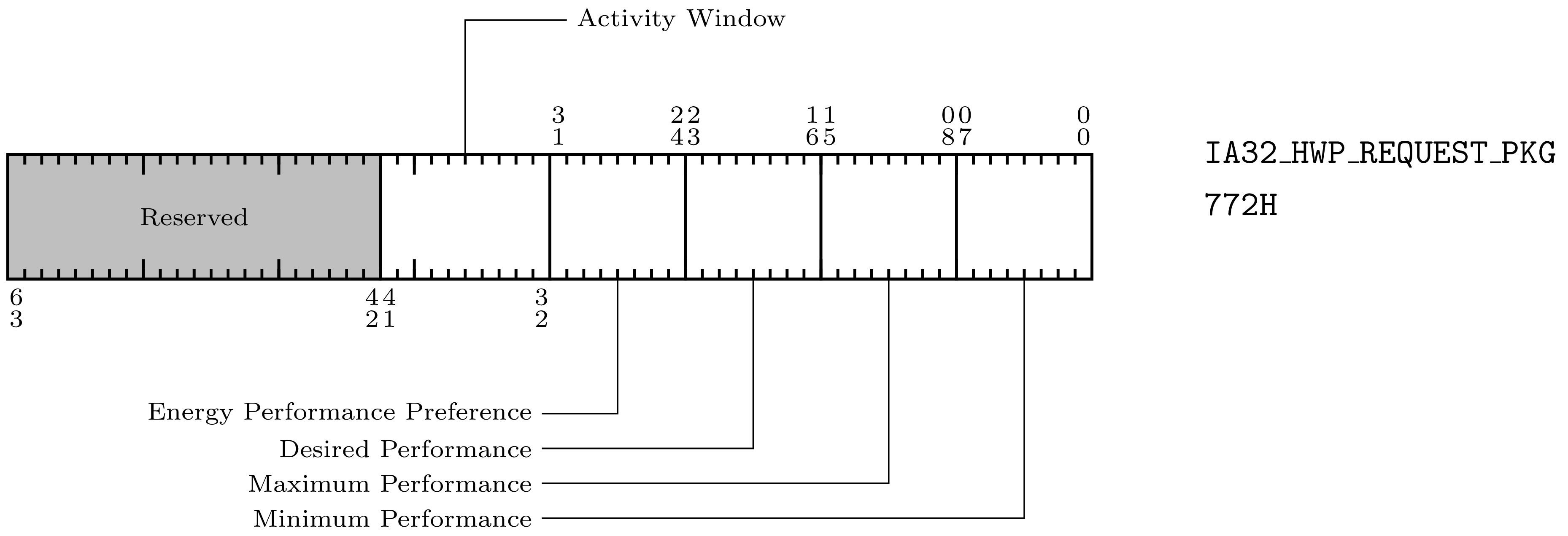

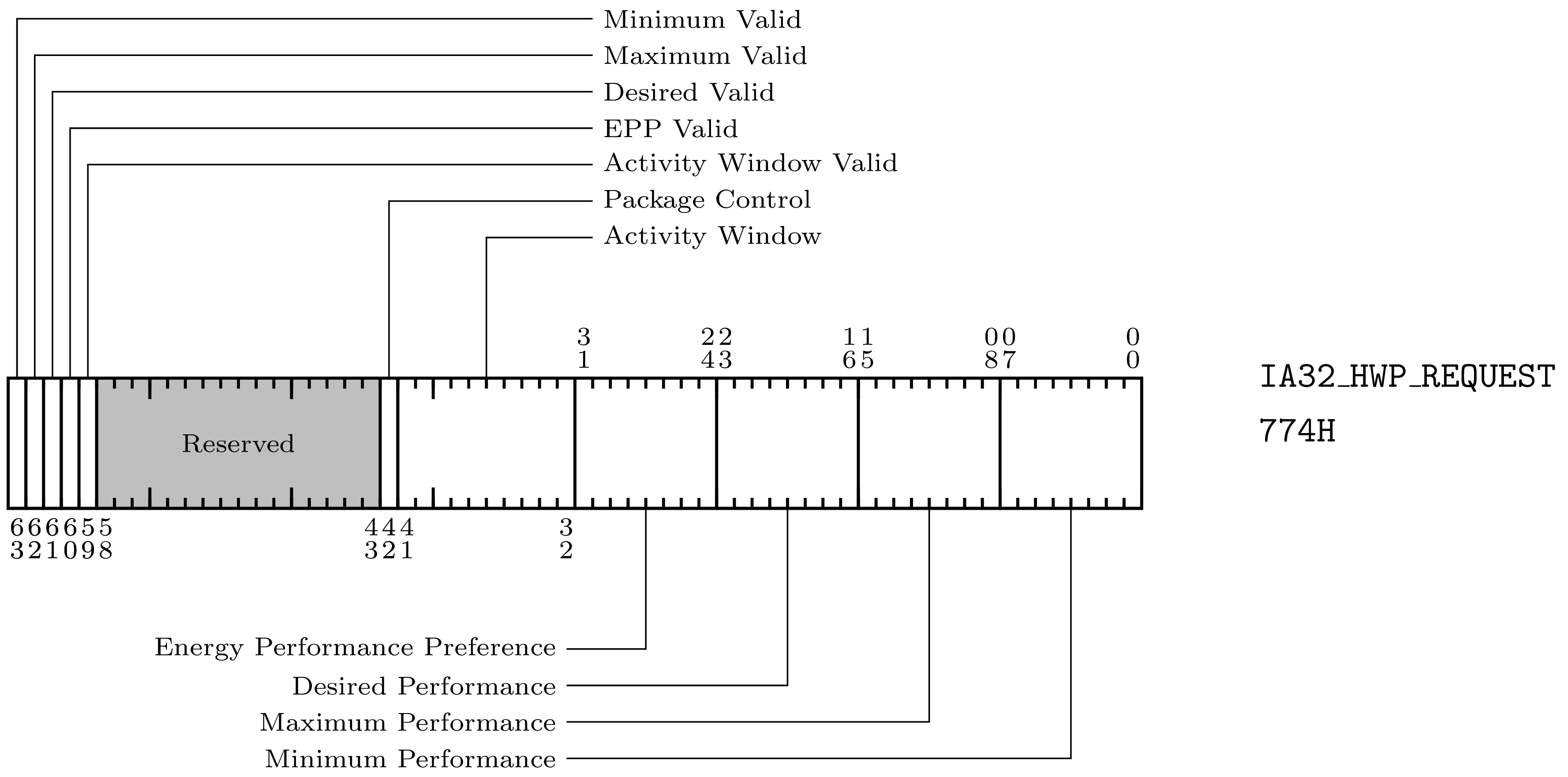







Hardware Duty Cycling
Present if CPUID.(EAX=6):EAX[13] == 1
- MSRs used:
IA32_PKG_HDC_CTL
IA32_PM_CTL1
IA32_THREAD_STALL
MSR_CORE_HDC_RESIDENCY
MSR_PKG_HDC_SHALLOW_RESIDENCY
MSR_PKG_HDC_DEEP_RESIDENCY
MSR_PKG_HDC_CONFIG






Thermal Monitoring and Protection
TM1 present if CPUID.(EAX=1):EDX[29] == 1, enabled by IA32_MISC_ENABLE[3]
TM2 present if CPUID.(EAX=1):ECX[8] == 1, enabled by IA32_MISC_ENABLE[13]
Digital Thermal Sensor Enumeration present if CPUID.(EAX=0):EAX[0]=1
- MSRs used
MSR_THERM2_CTL
IA32_THERM_STATUS
IA32_THERM_INTERRUPT
IA32_CLOCK_MODULATION
IA32_THERM_STATUS


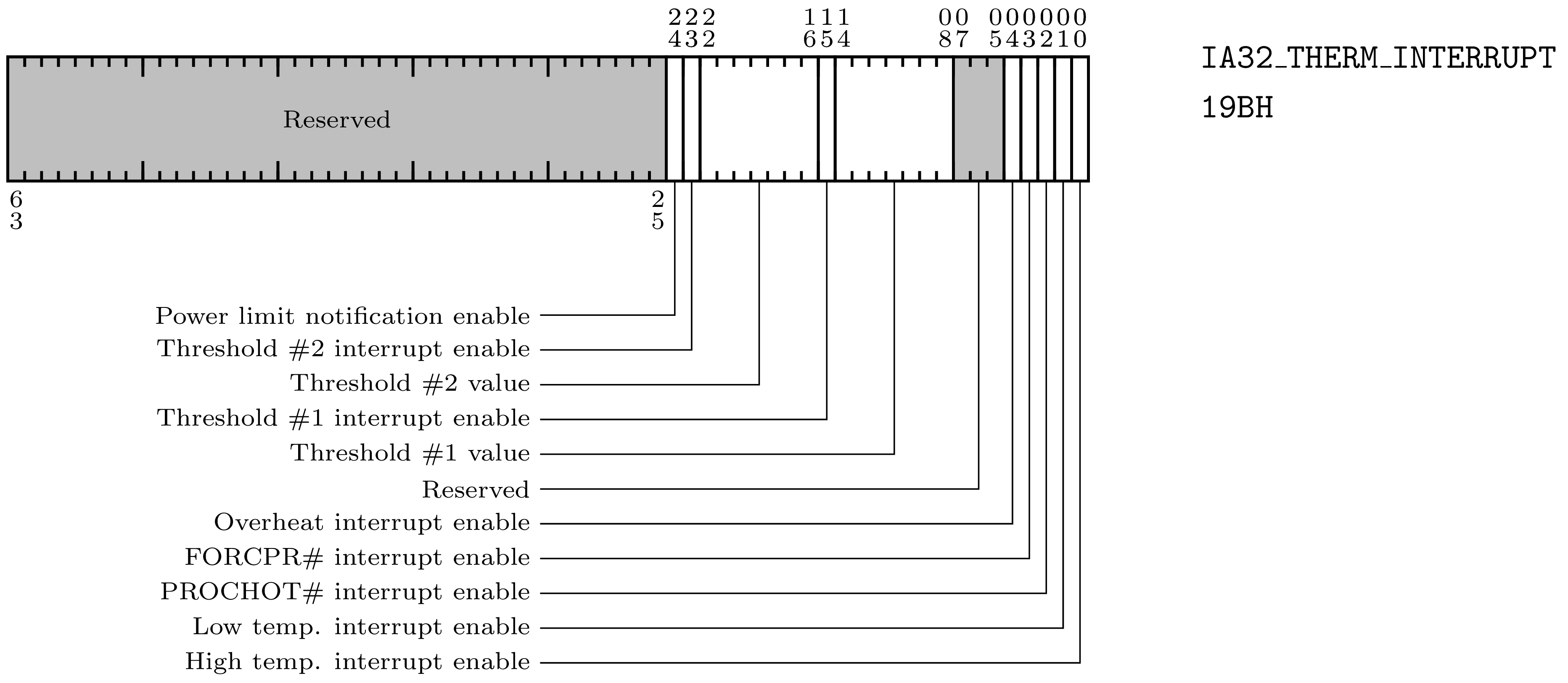


Package Level Thermal Management
Present if CPUID.(EAX=6):EAX[6] == 1
- MSRs used
IA32_PACKAGE_THERM_STATUS
IA32_PACKAGE_THERM_INTERRUPT
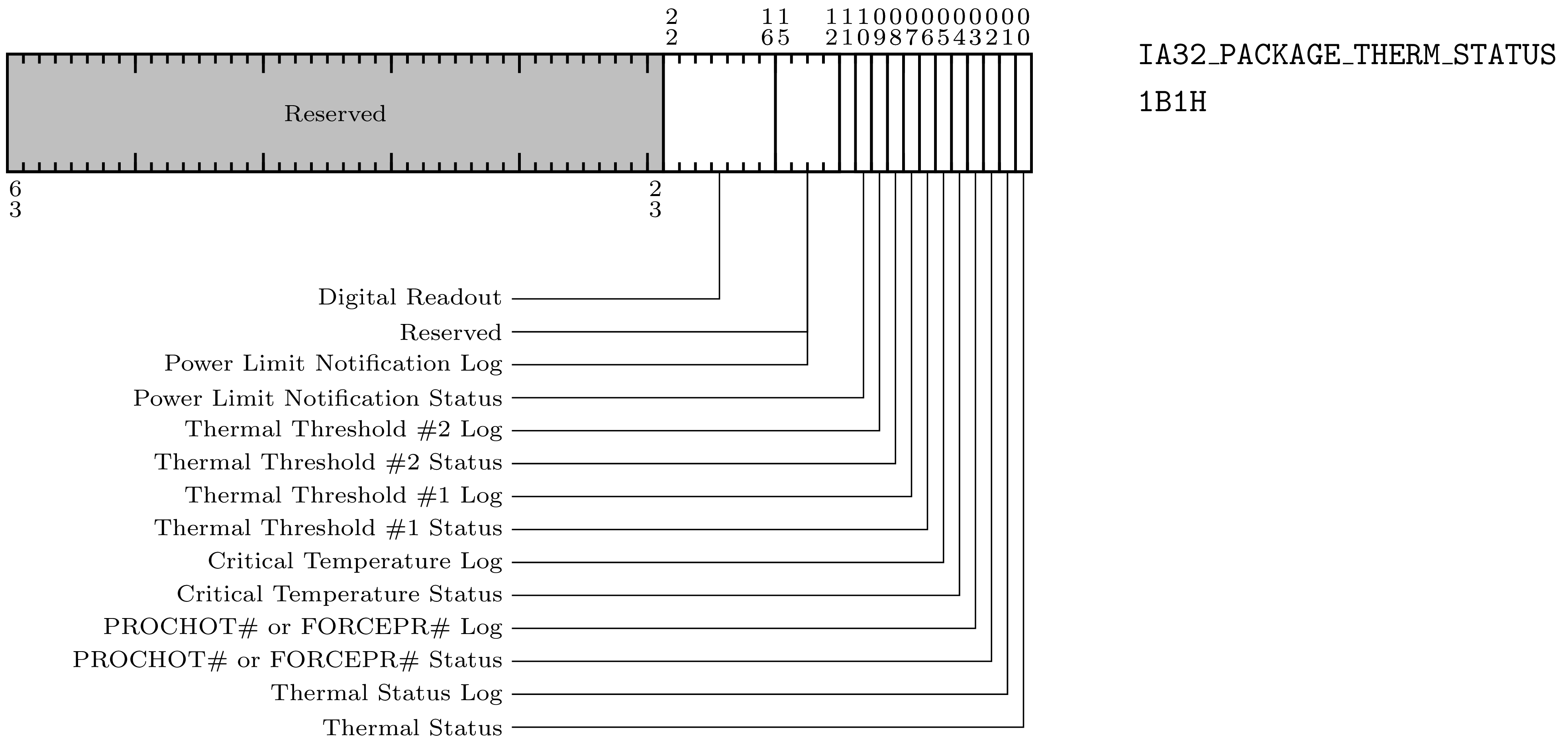
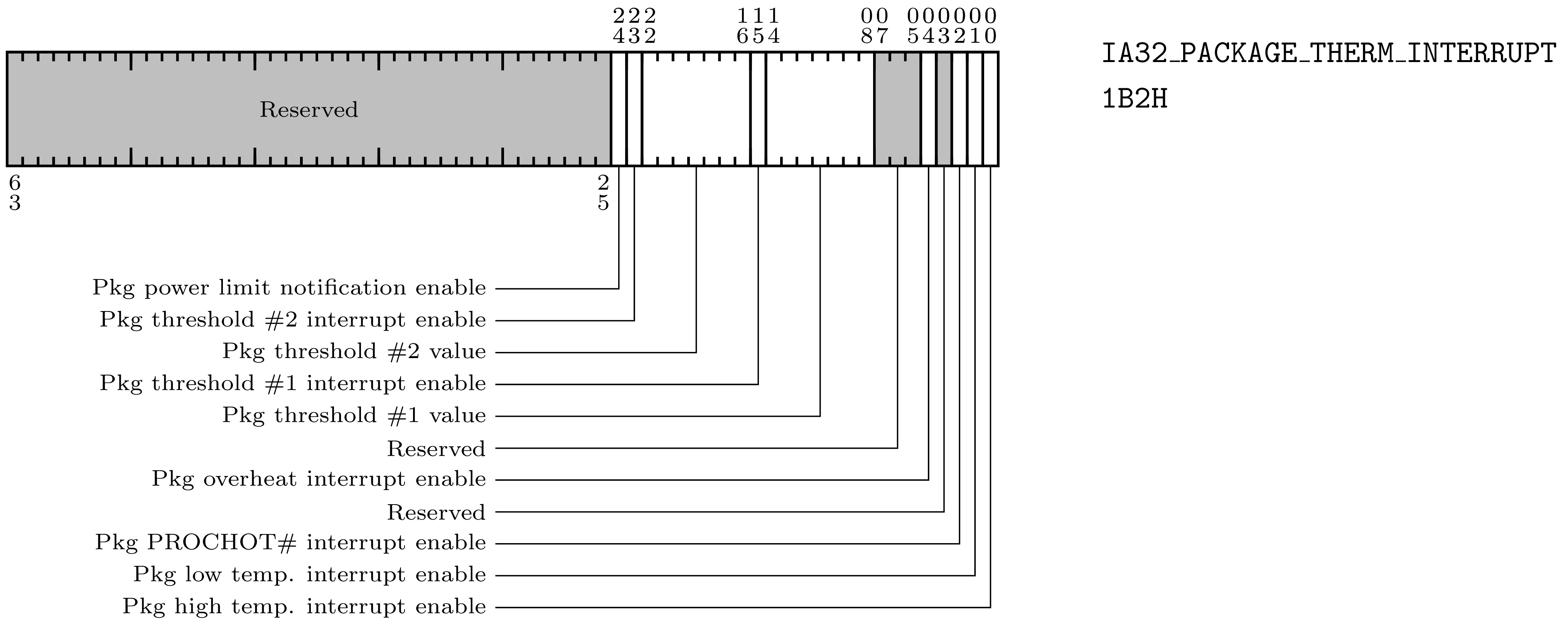
Platform Specific Power Management Support
- MSRs used
MSR_PKG_POWER_LIMIT
MSR_PKG_ENERGY_STATUS
MSR_PKG_PERF_STATUS
MSR_PKG_POWER_INFO
MSR_DRAM_POWER_LIMIT
MSR_DRAM_ENERGY_STATUS
MSR_DRAM_PERF_STATUS
MSR_DRAM_POWER_INFO
MSR_PP0_POWER_LIMIT
MSR_PP0_ENERGY_STATUS
MSR_PP0_POLICY
MSR_PP0_PERF_STATUS
MSR_PP1_POWER_LIMIT
MSR_PP1_ENERGY_STATUS
MSR_PP1_POLICY
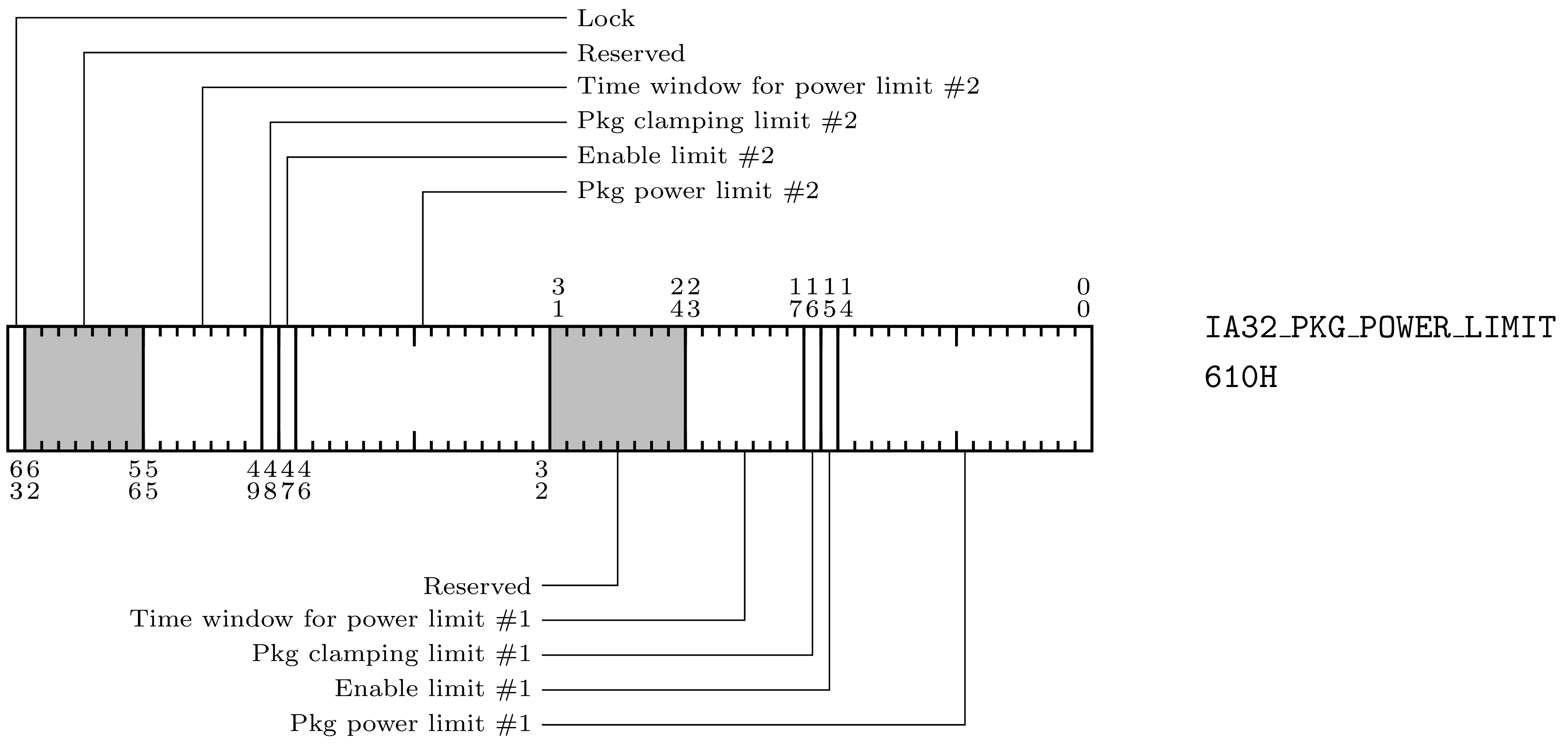
The two different power limits use different algorithms and are intended for use across different timescales. The details are still NDA.
There is a lower limit to the time windows. Values below that will be silently clipped. That value is also NDA.
The OS and enable bits are now ignored. Both of them should always be set high. Writing all-zeros to this register will not disable RAPL; the processor will just try to meet a zero-watt power bound (or whatever zero is clipped to).


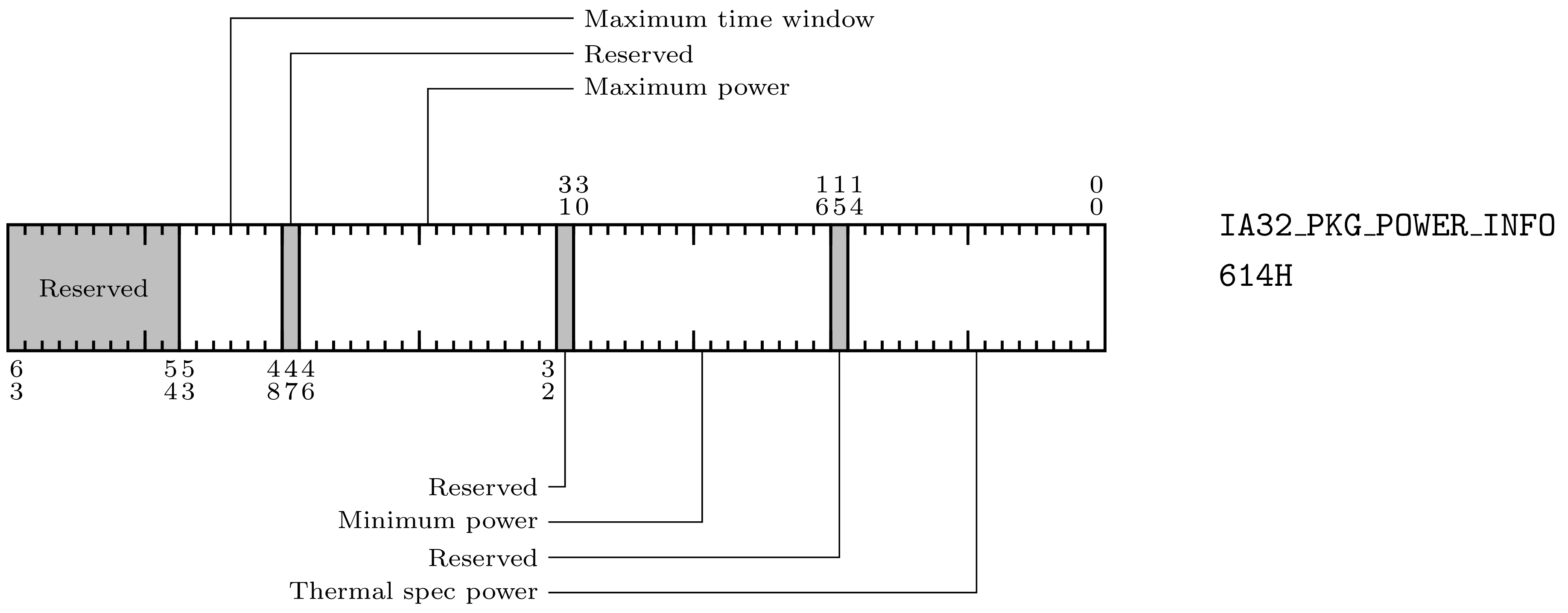

The DRAM power controls have not proven to be that useful. If a program is not generating much memory traffic, not much power is used. Programs that do generate lots of memory traffic have outsized slowdown if memory power is restricted.


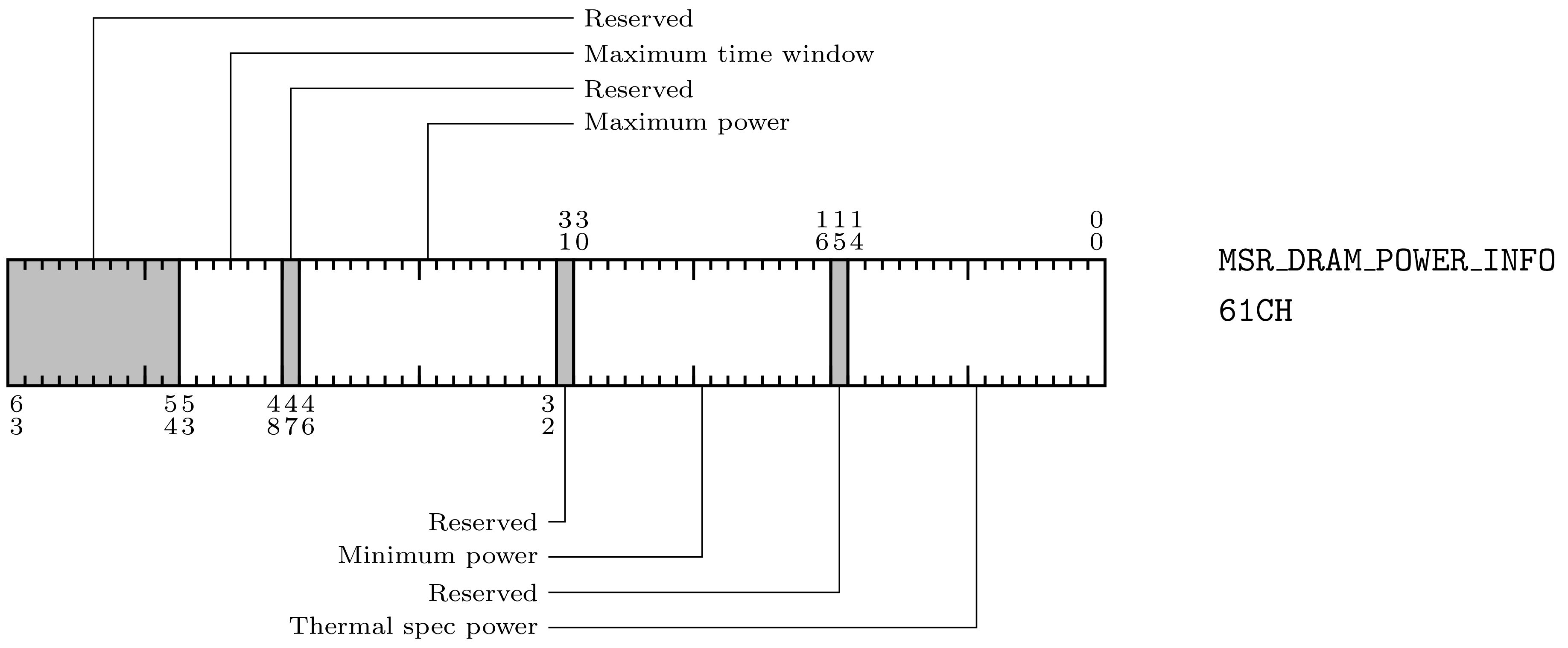

PP0 power control has been unofficially deprecated.




PP1 power control was intended for client processors and has not been investigated in the HPC community.


Other Public MSRs of Interest
MSR_POWER_CTL
